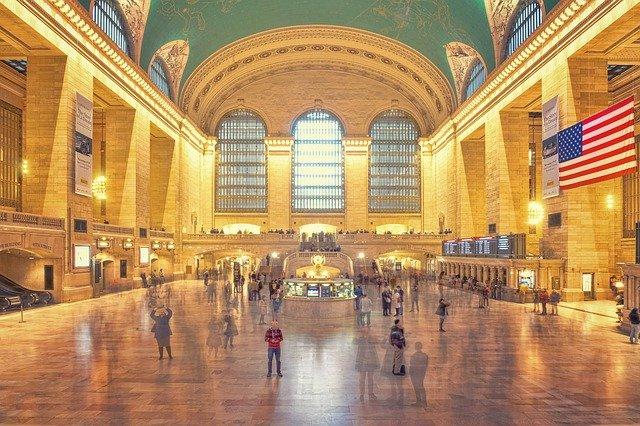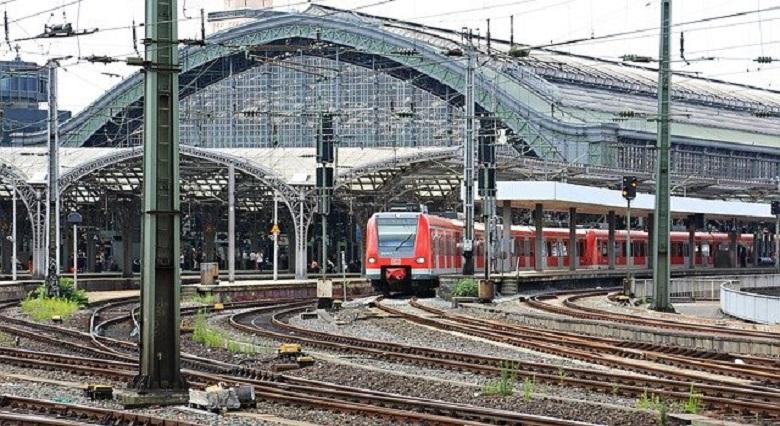Acquaintance with new countries for many tourists begins from the railway stations – these buildings, like the entrance gates, greet guests and provide food for first impressions. Therefore, railway stations, like ports in past centuries, tried to decorate and give them monumentality.
Often, train stations, as critical public objects, become part of their country’s history and turn into real attractive centers.
Grand Central Terminal, New York

The oldest railway junction of a colossal city holds the world record for the number of platforms (44) And tracks (67). In 1871, at the time of its completion, the Grand Central Station was the most expensive in the world. $ 43 million was spent on its construction. Today, when the budget of huge skyscrapers exceeds billions, this amount does not seem very impressive, but for the end of the 19th century it was impressive.
Americans are very fond of their train station; it is one of the tourist attractions (even those guests of the city who prefer to travel by other means of transport drop in here). In addition, the famous building has already appeared in several dozen films, so it is a real-world star. It is interesting that until recently, the “secret” 61st platform operated at the Central Station. True, it was used only once in history – to board the Franklin Roosevelt train.
St Pancras Railway Station, London
A magnificent example of English neo-Gothic architecture of the Victorian period made of red brick has become one of London’s “calling cards”. The most impressive part of it, apart from the facade, is the iron-and-glass arched railway landing.
The station received its first visitors in 1868, and at that time, the vast terminal was the most expansive transparent structure in the world. Queen Victoria personally oversaw the construction of a unique building that was supposed to symbolize the greatness of the British Empire. The railway junction received its name in honour of the nearby church of St. Pancratius.
Chhatrapati Shivaji Station, Mumbai
Another magnificent Victorian creation, located in a former colony, was even named after Queen Victoria.
The station, reminiscent of an oriental palace, took ten years to build and was launched in 1888. it changed the name only a hundred years later; instead of the English ruler, it now bears the name of the national champion of India.
Today, Chhatrapati Shivaji Station is one of the few railway junctions included in the UNESCO World Heritage List.
Shinjuku Station, Tokyo
The railway station, located in one of the districts of Tokyo, may not be a masterpiece of architecture but entered the Guinness Book of Records as the busiest train station in the world. About 3.5 million passengers pass through it every day.
To accommodate such a human flow, the building has more than 200 exits. Interestingly, after the 19th century, when this branch line was created, Shinjuku Station was not a vital transport hub. Still, gradually, with the development of the city, its importance and passenger traffic increased.
The Japanese also remember the station in connection with the student unrest in the late 1960s. A crowd of 300,000 in honour of the International Anti-War Day blocked the tracks and stopped the movement of trains. In May 1995, a major terrorist attack was prevented here – a member of the Aum Shinrikyo sect tried to install the device containing cyanide in the underpass toilet. Fortunately, a vigilant train station attendant noticed this and mass poisoning at the busiest station in the world was prevented.
Canfranc International Station, Spain
In 1928, Canfranc International Station was the largest in Europe. It served as the most important station between Spain and France for several decades and received thousands of passengers every day.
This unusual gigantic structure (the length of many platforms exceeds 200 meters) was called the “Mountain Titanic” – and, unfortunately, it almost shared the fate of the magnificent ship. In 1970, a train crash destroyed the bridge between France and Spain, and the railway line was forsaken because it was too costly to repair the crossing.
This section of the border between the two countries was closed, and the luxurious train station – a masterpiece of art nouveau architecture – was simply abandoned.
Today, the unique building is used in a highly unusual way – in one of its underground tunnels, at a depth of 850 meters, a unique scientific laboratory was built, completely protected from external radiation. High-precision experiments are carried out there, and thus, the station, abandoned for 50 years, continues to be helpful. The Spanish government plans to create a luxury hotel on its basis, and, perhaps, Canfranc will soon find a second life in this capacity
